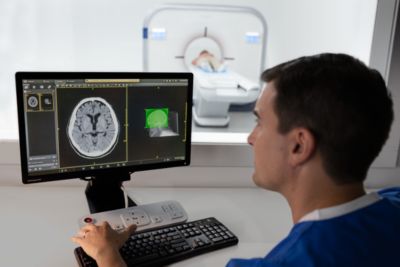
Improving efficiencies at Princess Alexandra Hospital with Philips Incisive CT
- By Philips
- November 11 2025
- 3 min read
The Princess Alexandra Hospital NHS Trust faced challenges with outdated CT systems that slowed workflows and complicated patient positioning. By installing the Philips Incisive CT, the Trust has transformed its imaging operations—reducing scan times, enhancing image quality, and easing pressure on radiographers. With AI-powered automation and smart workflow tools, staff can now focus more on patient care, while delivering faster, more comfortable diagnostics across the community.
At-a-glance:
- Partner
- The Princess Alexandra Hospital NHS Trust.
- Challenge
- Dated technology led to longer initialisation times and a manual patient positioning process.
- Solution
- Latest Philips Incisive CT scanner was installed, fully equipped with the AI-based CT Smart Workflow including Precise Position, Precise Image, Precise Cardiac and Precise Intervention.
- Results
- Smarter clinical decision-making and increased efficiency
- Over 7% dose reduction when Precise Position is used2
- > 99% system availability
- Image and protocol consistency across all radiographers and scanners
- Easy to use and train staff
- Accommodating a wider range of patients and exam types
- Less time focused on technology and more time with patients

The Princess Alexandra Hospital NHS Trust provides a full range of general acute, outpatient and diagnostic services at The Princess Alexandra Hospital in Harlow, the Herts and Essex Hospital in Bishop’s Stortford, and St Margaret’s Hospital in Epping. The Trust employs more than 4,000 staff and serves a local population of around 350,000 people living in west Essex and east.
Working in partnership
Philips and The Princess Alexandra Hospital have been working together for over two decades. The hospital has three Philips CT scanners on site across its radiology and emergency departments, with two more to be installed as part of the Trust’s Community Diagnostic Centre. On average, the existing CTs scan a total of 100 patients per day. The latest Philips Incisive CT scanner was installed in April 2023 to replace an older model that had dated technology, longer initialisation times and a manual patient positioning process.
Improved experience for staff and patients
Equipped with the latest technology, the Trust is now benefiting from an improved CT experience; integrating innovations in imaging, workflow, and lifecycle management to enable smart clinical decision-making, and increased efficiency.
The Philips Incisive CT is fully equipped with the AI-based CT Smart Workflow which includes Precise Position, Precise Image, Precise Cardiac and Precise Intervention. It offers enhanced image quality with iDose, O-MAR and 70 kV scanning, enabling the Trust to accommodate a wide range of patients and exam types.
With the Incisive CT, the patient worklist is available on gantry side panels, allowing users to check patient details, select the protocol and patient orientation. The positioning camera will then suggest a start and end point for their planning scan, and the radiographer can select autoload for the patient to be positioned correctly in both horizontal and vertical planes. By the time the radiographer has walked out of the room the scanner has initialised and is ready to go. This enables the team to spend their time focusing on the patients rather than the technology.
Finally, Philips is so confident in the quality and reliability of its Incisive CT’s v MRC scan tube, that it has given it an unlimited use, Tube for Life1 guarantee. This means in the unlikely event that the tube fails, Philips will proactively replace it at no cost, helping to reduce downtime and improve efficiency.
We like the Philips Incisive CT so much that we have three of them. It makes training new CT radiographers much simpler, enabling us to get our staff up to speed quickly. It also maintains an image and protocol consistency across all our scanners.
Zoe Tiley
CT superintendent
The Princess Alexandra Hospital
Being able to perform head scans anywhere across the table has made it easier when dealing with trauma or immobile patients, as we don’t have to hoist patients to the end of the scanner, which is better for staff and patients.
Zoe Tiley
CT superintendent
The Princess Alexandra Hospital
The positioning camera has been a great addition. This has helped staff ensure patients are centred correctly in the isocentre when positioning and we’ve noticed that this has had a reduction in dose for many patients.
Zoe Tiley
CT superintendent
The Princess Alexandra Hospital

Princess Alexandra Hospital NHS - CT
Copy this URLto share this story with your professional network
Footnotes
- Life of the product (or CT system) is defined by Philips as 10 years. Lifetime guarantee for tubes in conjunction with 10-year Primary or Uptime RightFit Service Agreement from equipment purchase.
- Philips CT Clinical Application Specialist assessment at Princess Alexandra Hospital. Based on last 30 patients scanned on each scanner. Compared doses for the chest abdomen pelvis with contrast scan across Philips Incisive CT scanners. Average dose on precise position camera scanner was 365.89DLP and the average dose on the non-camera scanner was 393.88DLP.
Disclaimer
Results from case studies are not predictive of results in other cases. Results in other cases may vary.